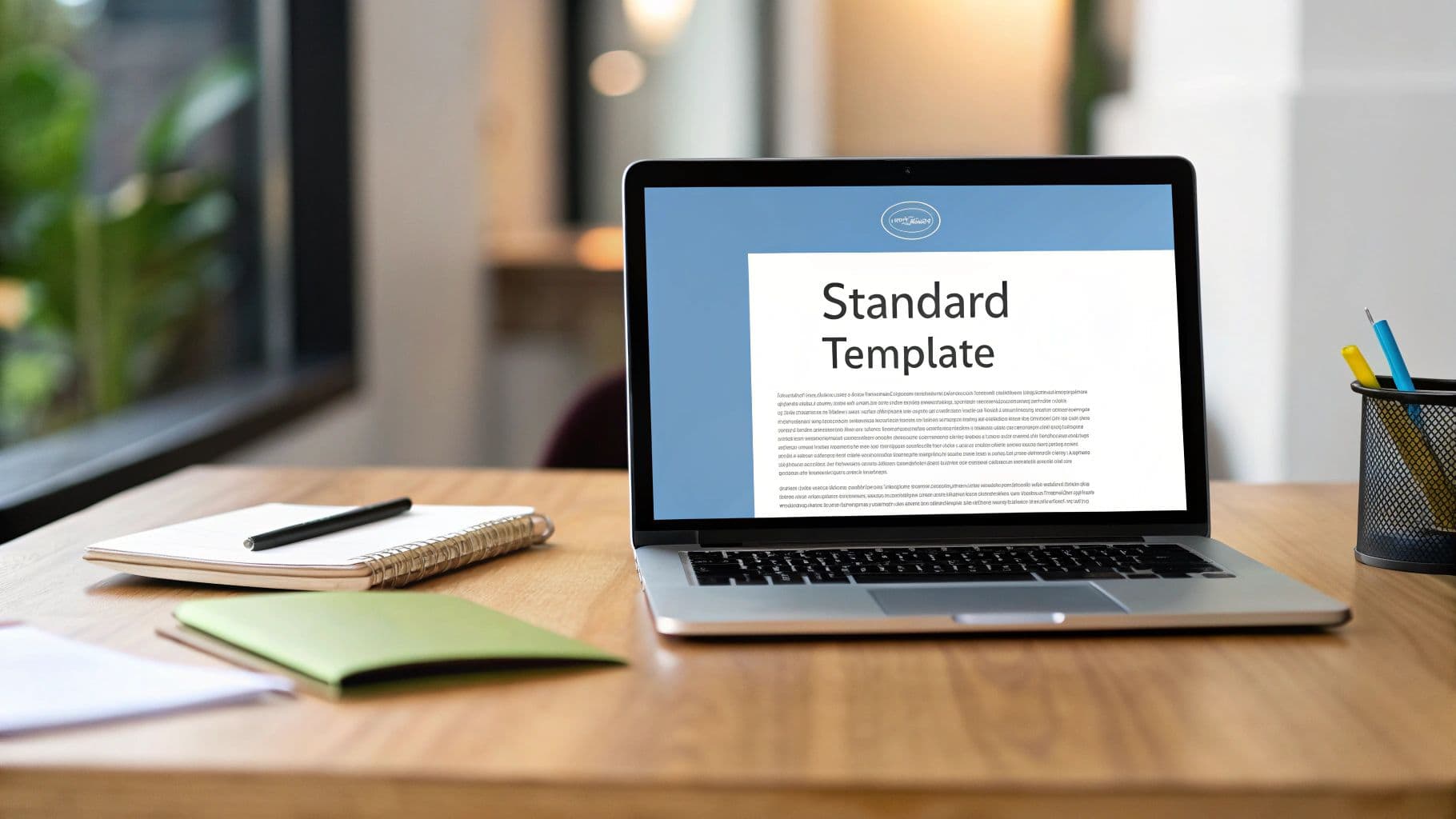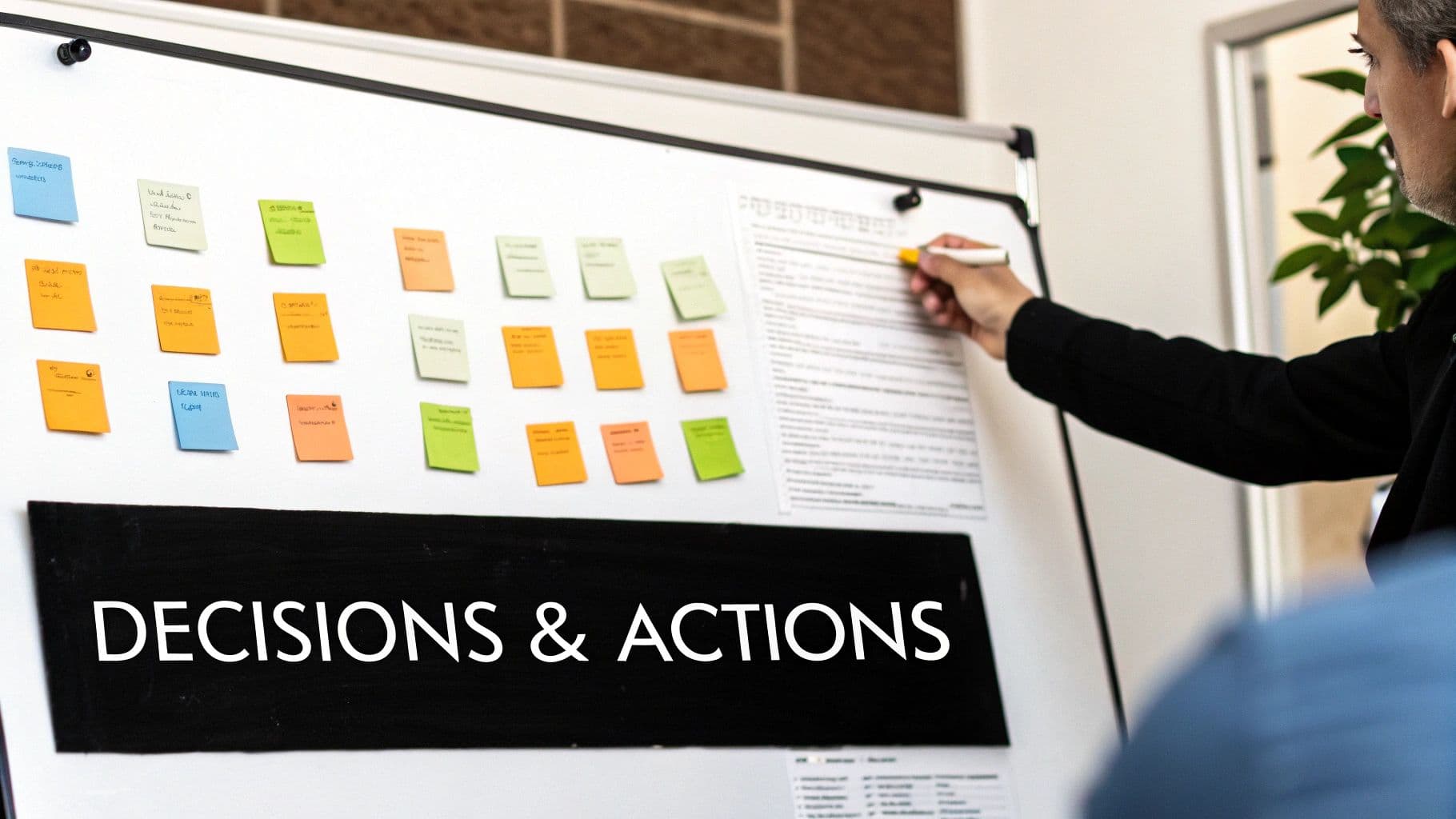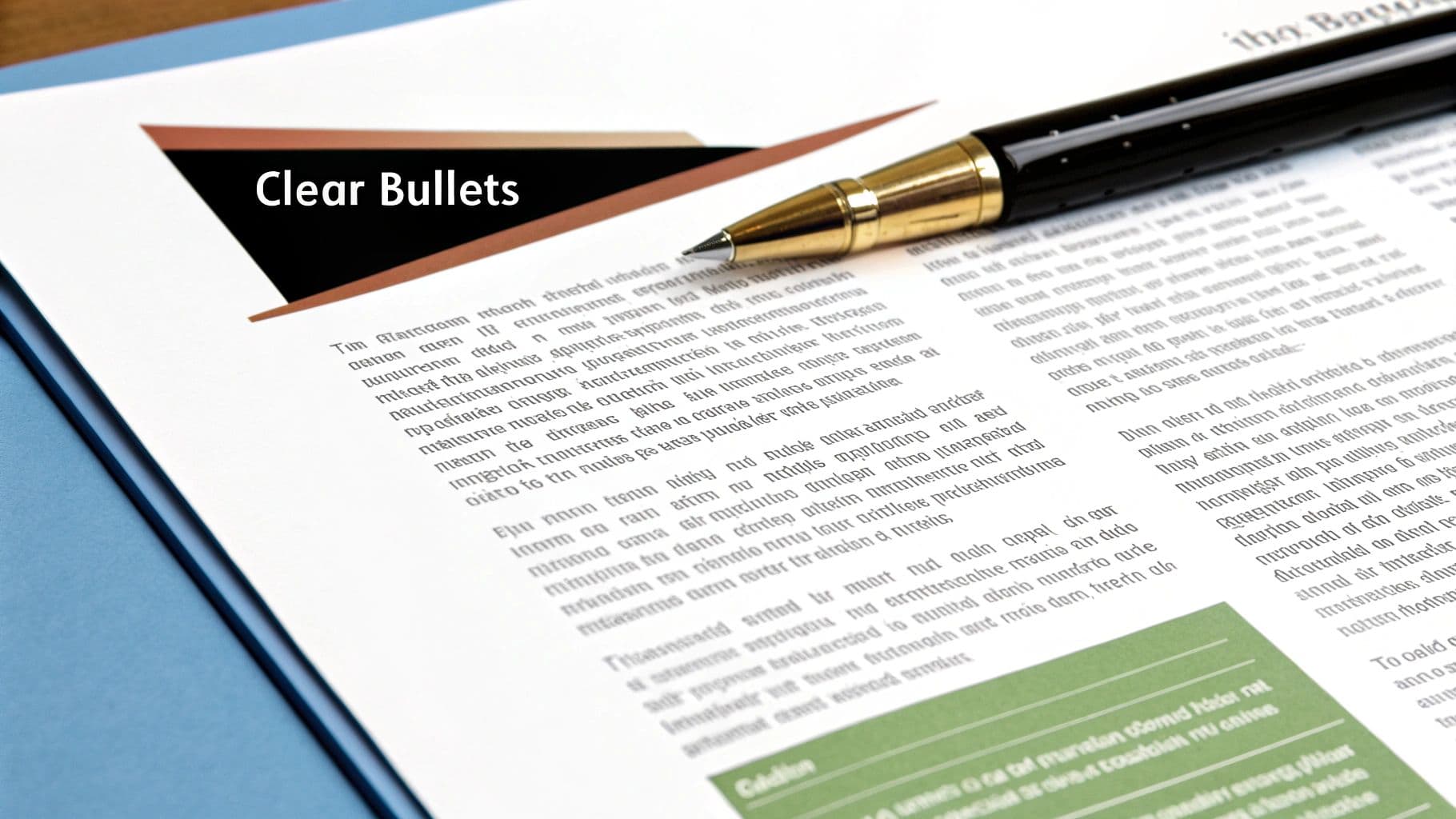Meetings can either be powerful drivers of progress or frustrating time-sinks. The difference often comes down to one crucial document: the meeting minutes. Far from being a mere administrative chore, well-crafted minutes serve as the official record of decisions, a roadmap for action, and a vital tool for accountability. Without a clear and accurate summary, critical discussions fade from memory, action items are forgotten, and momentum stalls.
Many teams struggle with inconsistent formats, vague action items, and delayed distribution, turning a valuable asset into an ignored email attachment. This guide cuts through the noise, offering clear, actionable meeting minutes best practices that transform your records from simple notes into strategic tools. This is not about theory; it's about practical application. We will provide specific, step-by-step guidance to ensure your minutes are concise, accurate, and truly useful.
Whether you're a seasoned executive assistant, a project manager, or have just been tasked with taking notes for the first time, these eight proven strategies will help you create flawless, professional records. By implementing these techniques, you can ensure every meeting you document drives real, measurable results and keeps your entire team aligned and moving forward.
1. Create a Standardized Template
Establishing a consistent, standardized template is one of the most effective meeting minutes best practices for any organization. A template provides a reliable framework, ensuring that all critical information is captured uniformly every time, regardless of who is taking the notes. This consistency makes minutes easier to write, read, and reference later, eliminating confusion and saving valuable time.

A well-structured template acts as a guide for the note-taker, prompting them to record essential details that might otherwise be forgotten. By standardizing the format, you create a familiar structure that allows stakeholders to quickly find the information they need, whether it's a key decision, an assigned action item, or the next meeting date.
Why It Works
A standardized template drives efficiency and clarity. It removes the guesswork from minute-taking and establishes a professional, organized approach to meeting documentation across the entire organization.
- For the Note-Taker: It simplifies the process, reducing the cognitive load of deciding what to include and how to format it.
- For Attendees: It provides a predictable layout, making the minutes scannable and easier to digest.
- For the Organization: It ensures a complete and consistent historical record of all meetings, which is vital for accountability, project tracking, and compliance.
How to Implement It
Getting started with a template is straightforward. Your goal is to create a master document that can be easily accessed and used for every meeting.
- Define Core Sections: Include essential fields like Meeting Title, Date/Time, Location, Attendees, Absentees, and Agenda Items. Crucially, add dedicated sections for Decisions Made and Action Items (with assigned owners and due dates).
- Add Branding: Incorporate your company's logo and branding to maintain a professional look.
- Create Variations: Consider developing different templates for different meeting types. For example, a daily stand-up template will be simpler than one for a formal board meeting. For a deeper dive into structuring your document, you can find a perfect meeting minutes format and sample template here.
- Make It Accessible: Store the template in a shared, central location like a company intranet, Google Drive, or SharePoint folder.
- Review and Refine: Schedule an annual review of your templates to incorporate feedback and ensure they still meet the organization's needs.
2. Focus on Decisions and Action Items
The most valuable content in meeting minutes are the decisions made and the specific action items assigned. While it can be tempting to capture every word spoken, one of the most crucial meeting minutes best practices is to concentrate on outcomes. Effective minutes prioritize the commitments and next steps that drive progress, transforming a discussion into a plan.

This approach shifts the purpose of minutes from a simple transcript to a strategic tool for accountability and momentum. By filtering out conversational noise and highlighting what truly matters, you create a clear and actionable record that attendees can use to guide their work after the meeting ends.
Why It Works
Focusing on decisions and actions turns meeting minutes into a powerful productivity driver rather than a passive archive. This method ensures clarity and holds everyone accountable for their commitments.
- For the Note-Taker: It simplifies the note-taking process by providing a clear filter for what is important, reducing the pressure to document everything verbatim.
- For Attendees: It provides a concise summary of what was accomplished and what needs to happen next, making it easy to review and act upon.
- For the Organization: It creates a clear chain of accountability, making it easy to track progress on key initiatives and ensure that decisions are implemented. For instance, board meeting minutes for public companies must clearly document all formal resolutions for legal and compliance reasons.
How to Implement It
Adopting this focus requires a deliberate shift in how you record and structure information. The goal is to make outcomes the most prominent part of your document.
- Create Dedicated Sections: Just like with a template, ensure your minutes have distinct, clearly labeled sections for Decisions Made and Action Items.
- Use Action-Oriented Language: Document decisions with strong action verbs like Approved, Agreed, Resolved, or Rejected. For action items, start with a verb that describes the task.
- Assign Ownership and Deadlines: Every action item must have a clearly assigned Owner and a specific Due Date. Without these, accountability is lost.
- Highlight Visually: Use formatting like bold text, tables, or a separate color to make the decisions and action items stand out from the rest of the notes.
- Track Actions Separately: For complex projects, consider linking your minutes to a dedicated action item tracker. Modern tools can also help you automatically identify and organize these key takeaways. You can learn more about AI-powered action item extraction to streamline this process.
3. Write in Present Tense and Third Person
To create a formal, objective, and enduring record, one of the most critical meeting minutes best practices is to write in the present tense and third person. This stylistic choice transforms personal notes into an official organizational document, removing subjective bias and ensuring the record stands as a factual account of the proceedings.
Writing in the third person (e.g., "the committee," "the board," "John Doe") and present tense ("the team agrees," "the board directs") establishes a tone of formal authority. This approach, rooted in principles from Robert's Rules of Order and corporate governance, ensures the minutes are clear, professional, and consistent, regardless of who writes them.
Why It Works
This method creates a clear, unbiased historical record that focuses on outcomes rather than individual perspectives. It enhances the credibility and professionalism of the meeting documentation, making it a reliable source for future reference.
- For the Note-Taker: It provides a clear grammatical framework, making it easier to document discussions and decisions without inserting personal opinion or emotion.
- For Attendees: It presents information factually and impersonally, reducing the potential for misinterpretation or disputes over what was said or decided.
- For the Organization: It produces an official, legally sound document that is suitable for audits, compliance checks, and formal corporate records.
How to Implement It
Adopting this formal writing style requires a conscious effort to shift from conversational language to objective documentation. It's a simple change that adds significant professionalism to your records.
- Use Third-Person Language: Always refer to attendees by their full names or titles. Instead of writing "We decided to move forward," write "The committee decided to move forward with the project."
- Stick to the Present Tense: Document decisions and actions as if they are happening now. For example, use "The board approves the budget" rather than "The board approved the budget." This standard is common in formal parliamentary procedure.
- Eliminate Subjective Language: Avoid using adverbs or adjectives that convey emotion or personal opinion, such as "a heated discussion" or "an excellent idea." Stick to the facts.
- Review for Consistency: Before distributing the minutes, perform a quick review to ensure the entire document consistently follows the third-person, present-tense rule.
- Train Note-Takers: Ensure anyone responsible for taking minutes understands this standard. Provide them with examples and templates that reinforce this professional style.
4. Distribute Within 24-48 Hours
The value of meeting minutes diminishes rapidly with every day that passes. One of the most critical meeting minutes best practices is to distribute the summary within 24 to 48 hours. This swift turnaround ensures that the discussion is still fresh in everyone's mind, allowing for quick corrections and clarifications. It also maintains momentum by getting action items into the hands of their owners while the urgency is still high.

Timely distribution transforms minutes from a passive record into an active tool for productivity. For example, agile software teams often circulate stand-up notes within hours to unblock progress, while executive teams at Fortune 500 companies typically expect a 24-hour turnaround to drive strategic decisions without delay. Adhering to this window reinforces a culture of accountability and forward motion.
Why It Works
Promptly sharing minutes prevents critical tasks from falling through the cracks and ensures alignment while the meeting's context is still clear. It signals that the meeting was important and that its outcomes are expected to be acted upon immediately.
- For the Note-Taker: Finalizing the notes quickly is easier while the details are fresh, preventing a backlog of administrative tasks.
- For Attendees: It allows them to review assigned tasks and deadlines promptly, enabling them to plan their work accordingly.
- For the Organization: It accelerates project timelines, improves accountability, and creates a transparent record of progress that can be referenced by all stakeholders.
How to Implement It
Making the 24-48 hour window a standard practice requires discipline and a few simple process adjustments. The goal is to make distribution a non-negotiable, post-meeting ritual.
- Block Post-Meeting Time: Immediately after scheduling a meeting, block 15-30 minutes on your calendar right after it ends. Dedicate this time exclusively to cleaning up, finalizing, and sending the minutes.
- Prepare During the Meeting: Use your template to fill in as much information as possible in real-time. By the time the meeting is over, you should only need to review and format the document, not write it from scratch.
- Use Meeting Recorders: Leverage a meeting recording and transcription tool to quickly verify key decisions or exact wording. This eliminates the need to rely solely on memory and speeds up the review process.
- Create Distribution Lists: Set up email groups or communication channel lists for recurring meetings in advance. This allows you to send the final minutes with a single click instead of manually adding recipients each time.
- Communicate the Standard: Make it clear to all team members that minutes will always be sent within this timeframe. This sets expectations and reinforces the importance of timely follow-up.
5. Include Only Attendees and Necessary Recipients
A crucial, yet often overlooked, best practice for managing meeting minutes is strategic distribution. Sending minutes only to attendees and stakeholders who genuinely require the information protects confidentiality, prevents information overload, and ensures sensitive discussions remain within appropriate circles. This practice involves thoughtfully curating the distribution list rather than defaulting to a company-wide email blast.
By limiting access, you maintain the integrity and relevance of the information for its intended audience. A well-defined distribution strategy ensures that team members receive only the updates that are pertinent to their roles, making them more likely to read and act on the information provided.
Why It Works
Strategic distribution enhances security and focus. It prevents sensitive data from being unnecessarily exposed and helps employees manage their inboxes by cutting down on irrelevant communications. This approach is fundamental to effective information governance.
- For Confidentiality: It safeguards sensitive information discussed in HR, legal, or strategic executive meetings.
- For Relevance: It ensures that recipients are not burdened with information that doesn't impact their work, which improves engagement with the minutes they do receive.
- For Accountability: A clear, documented distribution list clarifies who is responsible for knowing the outcomes and executing the action items from a meeting.
How to Implement It
Implementing a controlled distribution process requires clear guidelines and regular reviews. The goal is to create a system that is both secure and efficient.
- Establish Distribution Tiers: Define clear guidelines for different meeting types. For example, board meeting minutes should be restricted to board members, while project kick-off minutes can be shared with the entire project team.
- Create Summary Versions: For meetings with broad implications but sensitive details, create a high-level summary for wider distribution and a detailed version for the core team.
- Use Secure Platforms: Distribute highly confidential minutes through secure, access-controlled platforms like a private SharePoint site or a dedicated channel in a tool like Microsoft Teams, rather than via email.
- Document the Distribution List: Include a "Distribution" or "Recipients" list directly within the meeting minutes template. This creates a transparent record of who received the document.
- Review Lists Regularly: Periodically review and update distribution lists, especially when team members change roles or leave the company, to ensure they remain current and appropriate.
6. Use Bullet Points and Clear Formatting
Well-formatted meeting minutes are not just about aesthetics; they are about clarity and accessibility. Using bullet points, clear headings, and a logical structure transforms a dense wall of text into a scannable, actionable document. This visual approach is one of the most crucial meeting minutes best practices, as it helps busy professionals quickly find relevant information and understand key outcomes without reading lengthy paragraphs.

A clean format guides the reader’s eye to the most important elements, such as decisions, deadlines, and assigned tasks. By breaking down complex discussions into digestible points, you make the information easier to process and retain, ensuring that everyone leaves with a clear understanding of the meeting’s results. Consulting firms, for example, create client-ready minutes with professional formatting to reflect their organized approach.
Why It Works
Clear formatting enhances readability and promotes action. It turns a passive record into an active tool for project management and accountability, ensuring key takeaways are not lost in cluttered text.
- For the Note-Taker: It simplifies the organization of information during and after the meeting, creating a clear hierarchy of topics.
- For Attendees: It allows for quick scanning to find specific decisions or action items relevant to them, saving time and reducing misinterpretation.
- For the Organization: It creates a professional and consistent standard for documentation that is easy to archive and reference for future projects or audits.
How to Implement It
Implementing a clean formatting strategy is about establishing a few simple rules and applying them consistently. This makes the minutes immediately more effective and user-friendly.
- Use Hierarchical Headings: Employ H2s for main agenda items and H3s for sub-topics to create a logical flow.
- Leverage Bullet Points and Numbered Lists: Use bullet points for notes and discussion points. Use numbered lists for sequential steps or action items to add clarity.
- Emphasize Key Information: Use bold text for key decisions, deadlines, and assigned names. This makes critical information stand out instantly.
- Incorporate Tables: Use simple tables to present complex data, comparisons, or a list of action items with columns for Task, Owner, and Due Date.
- Ensure Cross-Platform Consistency: Check that your formatting is clean and readable in different formats, such as a PDF, a shared document, or an email. To learn more about improving your note-taking process, explore these tips on how to take better meeting notes.
7. Record Audio for Accuracy Verification
Using an audio recording as a backup is a powerful meeting minutes best practice that ensures unmatched accuracy. While handwritten or typed notes are essential, a recording provides a verifiable source of truth, allowing the minute-taker to confirm specific quotes, intricate details, and the exact wording of key decisions after the meeting. It acts as a safety net, especially for complex, contentious, or technically dense discussions.